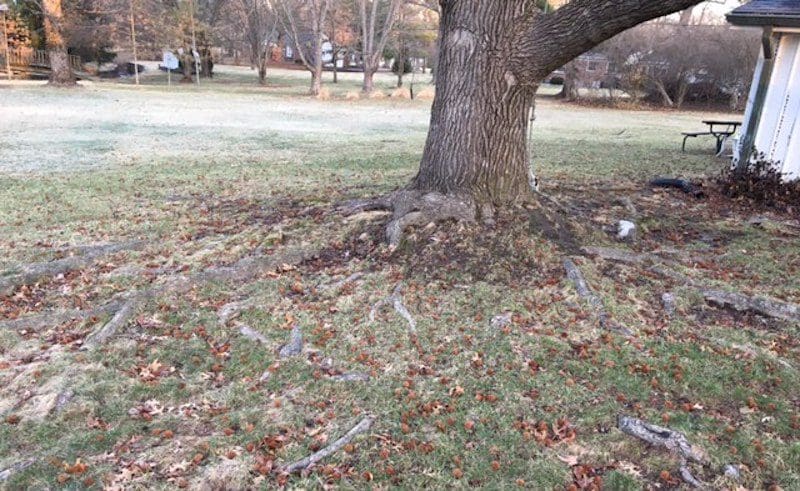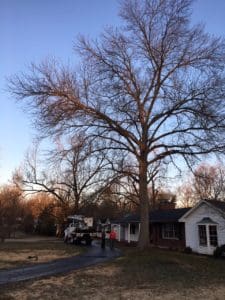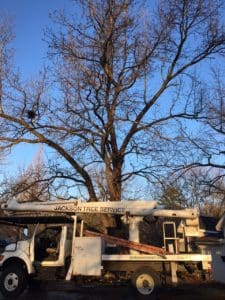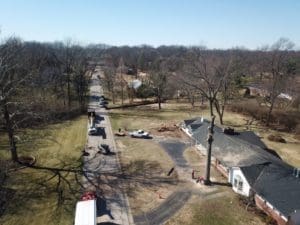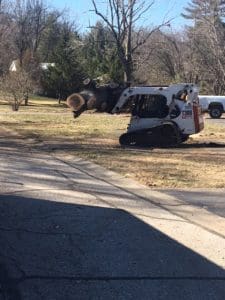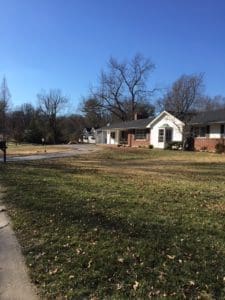Sweet gum trees are so beautiful…until you want to walk barefoot through your lawn.
The American sweet gum is a popular tree in the St. Louis area. Every subdivision from Florissant to Kirkwood to Maryland Heights has several of them.
While the trees were popular for builders and municipalities to plant due to their medium to fast rate of growth and beautiful color, they have become an annoyance for many homeowners.
In 2015 the city of Chesterfield branded the trees a “nuisance” and “hazardous” which required homeowners to maintain a ball-free path on the sidewalks and part of the street (the trees may be beautiful, but sweet gum balls are known to block up sewer inlets and many complain about tripping and falling on them).
In fact, at Jackson Tree Service, when we are contacted for an estimate to remove a living tree, it is frequently an American sweet gum.
We recently took down a sweet gum and an oak tree in Des Peres (see images below). As always, our climbers work together to create the best plan of action and a solid plan is put in place before equipment is set up or any cuts are made.
This customer requested that we cut the wood from the tree removal into 18” lengths so they could split it for firewood, so one crew worked to cut the sweet gum trunk down to length while a second crew got the oak tree on the ground.
The customer ended up with a healthy maple tree that had been deadwooded, a sweet gum and oak tree removed, a stack of wood for their fireplace and a clean yard.
When the growth of a sweet gum tree gets out of control, this can certainly be cause for removal, however, there are also many options for growing and maintaining a sweet gum tree in a way that preserves its natural beauty while also preventing it from being dangerous or an annoyance.
If your curious about these methods, we highly recommend checking out our blog post, Easy Care for Sweet Gum Trees in St. Louis.
Before
During
After

